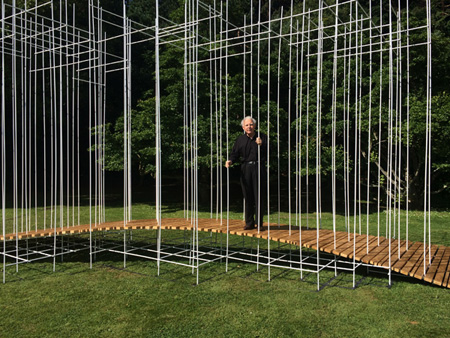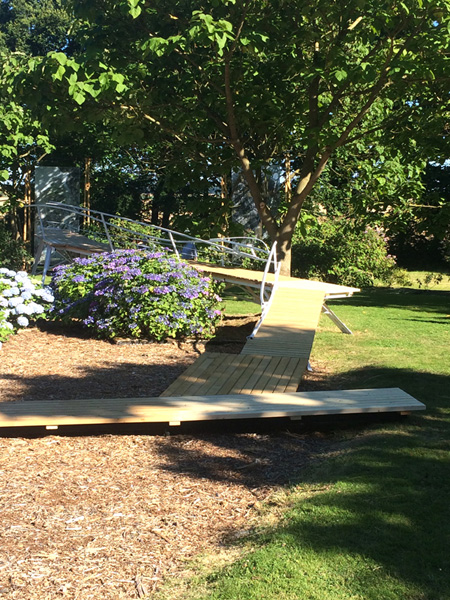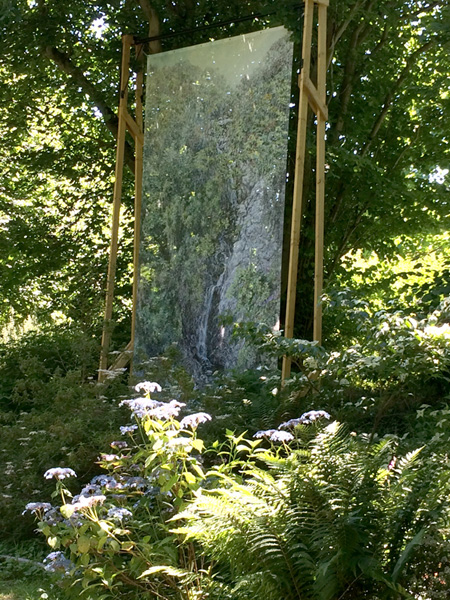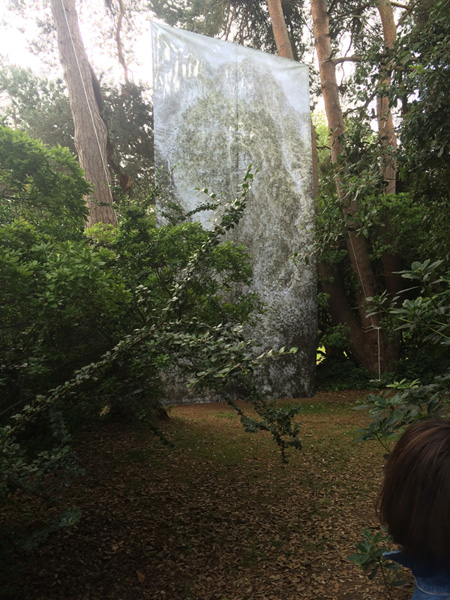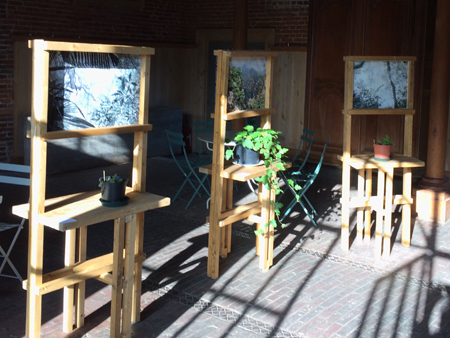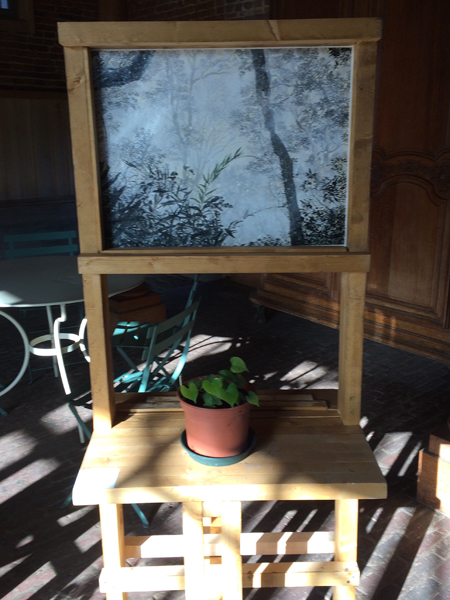Bois des Moutiers, France
Moca, Tapei
Commissariat : Alice Schÿler Mallet, Hungyi Chen
Avec :(臺灣)陳宣誠CHEN Eric/ArchiBlur Lab, 黃銘昌HUANG Ming-Chang、葉子奇YEH Tzu-Chi, 洪天宇HUNG Tien-Yu, 林銓居LIN Chuan-Chu, 尹子潔YIN Zi-jie, 許聖泓SHIU Sheng-Hung, 蔡依潔TSAI Yi-chieh, 陳正弘CHEN Cheng-Hung,(法國)艾莉絲‧馬雷Alice Schÿler Mallet,(美日)諾曼‧山田Norman Yamada,(保加利亞)瑞妲‧布可娃Rada Boukova
L’exposition “Regards croisés - paysages taïwanais” prend comme point de depart une enquête réalisée par les commissaires d’exposition Alice Schÿler Mallet et Hungyi Chen dans les montagnes de Alishan à Taiwan. En pleine nature, Alice découvre des hydrangea et autres plantes taiwanaises qu’elle reconnait avoir vues dans les jardins en Normandie. Des recherches démontrent que ces fleurs sont importées en France au 19ème à une époque où les pays occidentaux suivant l’impérialisme , montraient une passion pour la connaissance du monde. A cette grande époque d’aventures, les échanges de plantes participent à ce mondialisme. Aujourd hui ce voyage des plantes est toujours d’actualité. La circulation et les déplacements des plantes déforment la perspective de l’homme et de la culture, les plantes “dépaysagent” et aussi “repaysagent”. D’après cette approche, notre problématique est issue du dialogue des plantes, de la nature, du paysage et de la culture. L’exposition se compose d’oeuvres architecturales, de peintures, de vidéos et d’installations. L‘un des objectifs est de reconstituer le paysage d’origine de ces plantes en les replaçant dans leur contexte. Cependant, le but est de ramener la texture spéciale du paysage taiwanaisà l’interieur du contexte du jardin normand en créant un nouvelle perspective du lieu. Le projet expose les oeuvres de Tien-Yu Hung, peintre de paysage, il représente le paysage d’origine de ces plantes comme celui de la cascade dans les montagnes de Alishan et Wu lai. Eric Chen et son équipe Archiblur Lab construisent 2 installations architecturales; “Floating mountain” au Jardin Shamrock et “Suspended bridge” au Bois des Moutiers. Ces deux installations interagissent avec les hydrangeas et les photinia des jardins ainsi qu’avec les peintures de Tien-Yu, afin de proposer des approches nouvelles entre jardin, architecture et peinture. L’exposition aura lieu à Shamrock et au Bois des Moutiers à Varengeville en Normandie entre le 17 juillet et le 30 septembre aux jours et heures normales d’ouverture des deux jardins. Elle se poursuivra en décembre 2016 au musée d’art contemporain de Taipei (MOCA). Le fait de présenter les expositions dans 2 lieux différents, crée des regards croisés autour des notions de nature et de paysage entre la France et Taiwan. Plus particulièrement, on retracera la généalogie de la peinture du paysage de Taiwan ainsi que les impacts provenant de la France.
MOCA Taipei: Post Ecolonialism Project first starts as an eco-action, and gradually evolves into an "action culturelle." The project aims to perform "bricolage," or "repair" the destructed nature by planting trees while re-contemplating on our relationship with nature during the process of "bricolage" as we "return the land to trees." The large number of newly planted endemic trees also reconstructed the landscape destructed by human beings. The project viewed the action of tree-planting as a metaphor, through which we could re-examine the genre of landscape painting. The core spirit of both center on the relationship between the subject and nature. In addition to displaying documentations of the tree-planting action, the exhibition also reviews a certain aspect of Taiwanese landscape (painting), and attempts to represent this genealogy through new artistic creations.
The exhibition explores and contemplates on Taiwanese landscape through five sections. For the first section, the curatorial team journeyed to different parts of the Xue Mountain Range, Central Mountain Range, and Ali Mountain Range to filmed three waterfalls and created a scroll-like video work afterwards. The video symbolizes the landscape painting that shows how Taiwanese people have viewed nature during the rule of Qing dynasty. The second section introduces botanic gardens established during the Japanese-ruled period and reproduced picture postcards, through which the section would explore how nature was perceived in a manner of "decontextualization" after modernity was introduced into Taiwan as well as the landscape painting of this period. In the third section, audience could see the landscape paintings of different types by various contemporary Taiwanese painters. The section reveals both the disparities between contemporary landscape paintings and those from the Japanese-ruled Taiwan, and the shift in the relationship between man and nature. On view in the fourth section is a remake of a segment from Hou Hsiao-Hsien's road film, demonstrating the landscape from another perspective and through a different medium. The fifth section displays an installation that embodies the landscape of Taiwanese forest. A video of the Taiwanese endemic plant, Taiwan Photinia, is placed in this landscape installation. This particular Taiwan Photinia has been transplanted in a garden in Normandy, France several decades ago. Through its representation, the section reexamines the problematic of "ecolonialism" in the context of globalization and responds to the cultural thinking of recontextualization in this eco action of "returning the land to trees."

